…but why?
A friend asked me to make a LFO output for his Korg Monotribe. I had some experience with synth modding, so I though its the job just for me! On Muff Wiggler, topic “Korg Monotribe modifications thread” you can read, LFO signal (fed to VCO) is avaliable at pin7 of IC15. It should be easy.
Measurements
First of all, I disassembled the Monotribe, soldered temporary wires and got to measurements: for three MODE positions – FAST, SLOW and 1-SHOT, three WAVE settings – saw, triangle, square and three RATE potentiometer settings – maximum, middle and lowest. The TARGET switch was on VCO (LFO signal on pin7 is absent if TARGET = VCF) and sequencer was in PLAY mode.
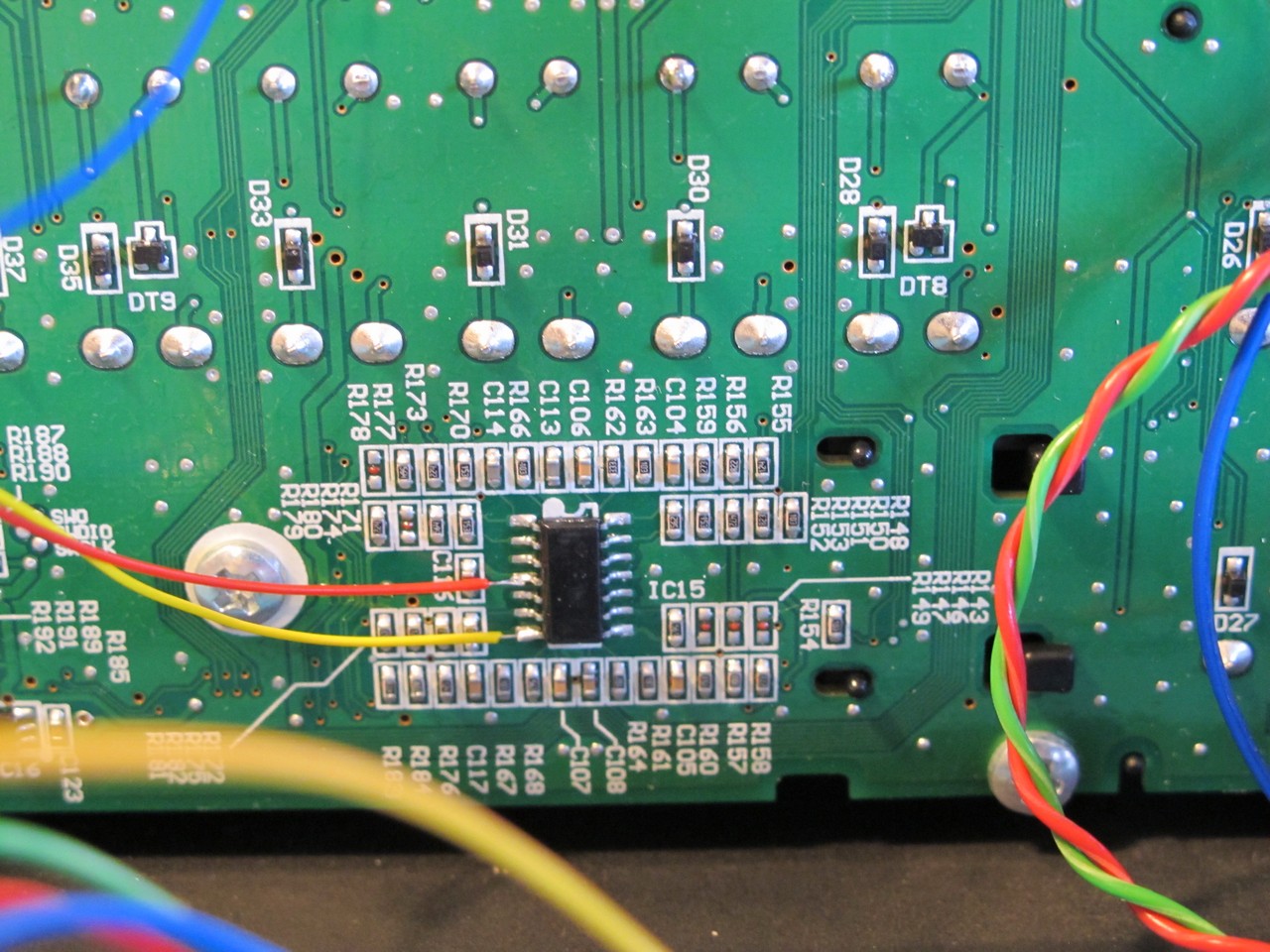
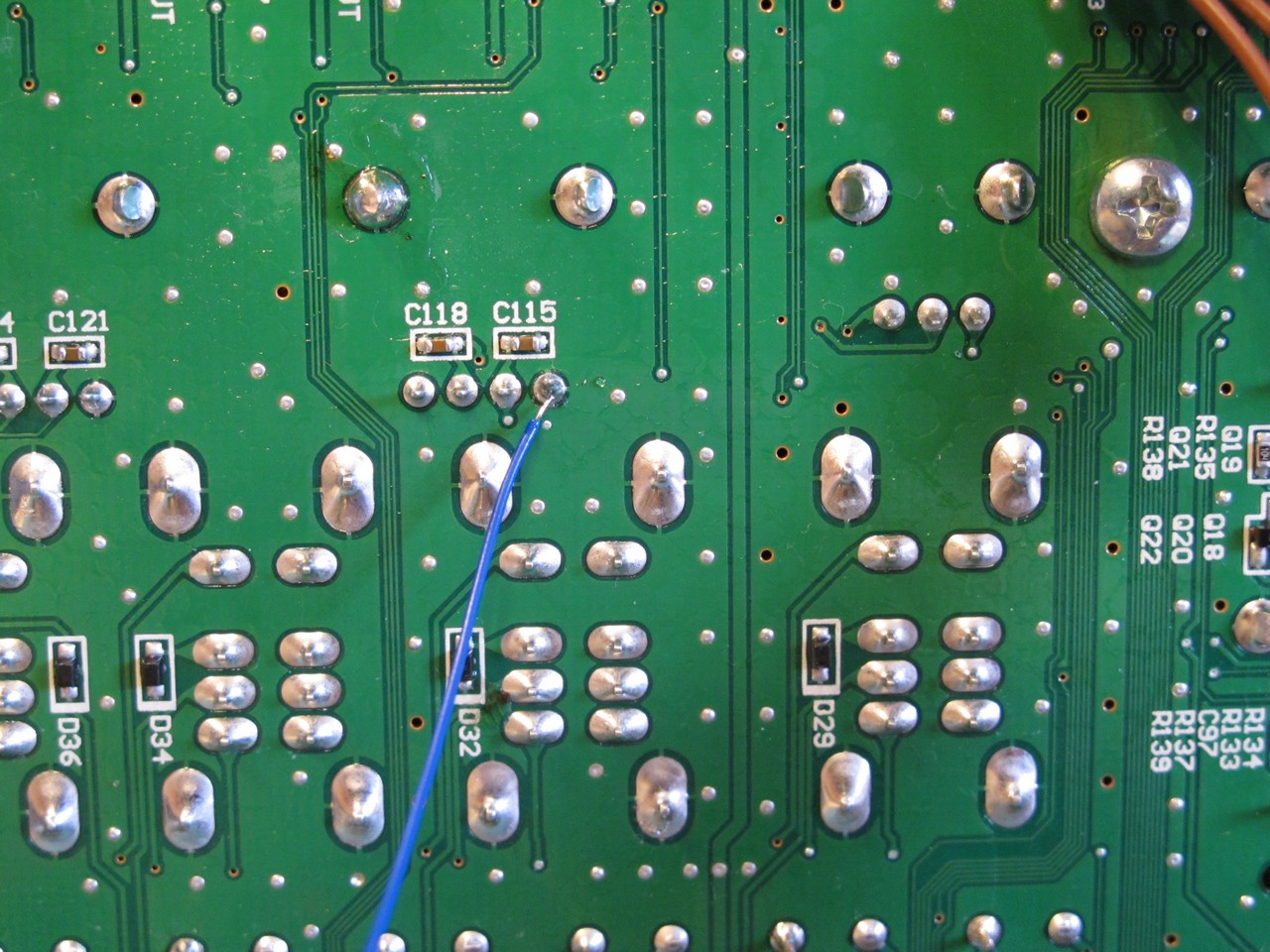
Waveforms for SLOW setting looks very good, with almost constant amplitude (1V p-p) and offset (Vbase between 1,0 and 1,3V). A dream for scaling and biasing. For this mode, the highest frequency is around 19Hz, lowest – 0,05Hz (1 cycle per 20 seconds).
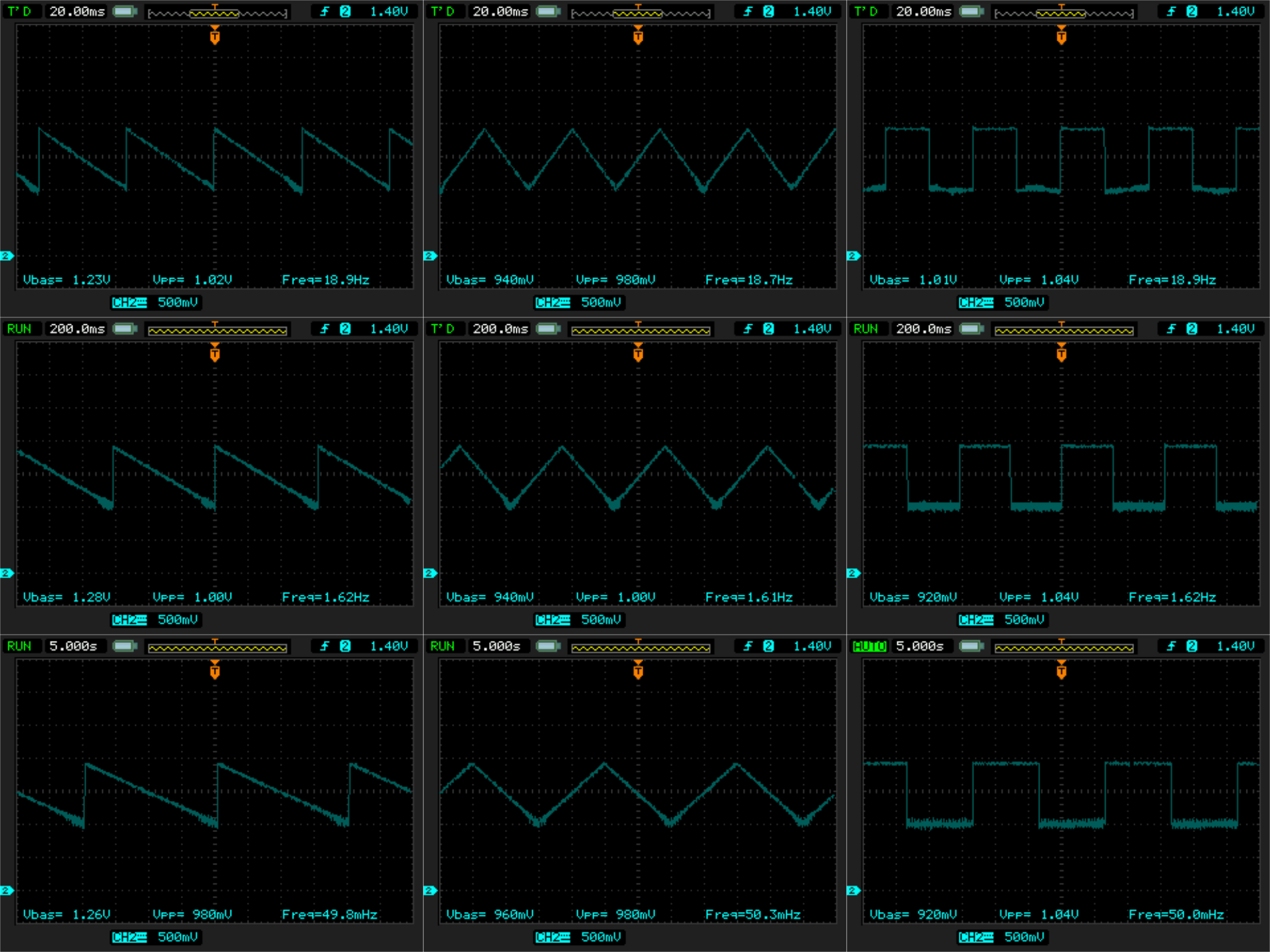
Seems like a little worse. For FAST mode and maximum RATE setting (over 5kHz frequency, far into audio range), the waveforms are almost unrecognizable, but there is hope for middle RATE setting, where everything looks as it should. As the frequency goes down, the amplitude drops drastically. In the last case (squarewave) the generator stops (which is strange, as LFO signals are told to be generated digitally).
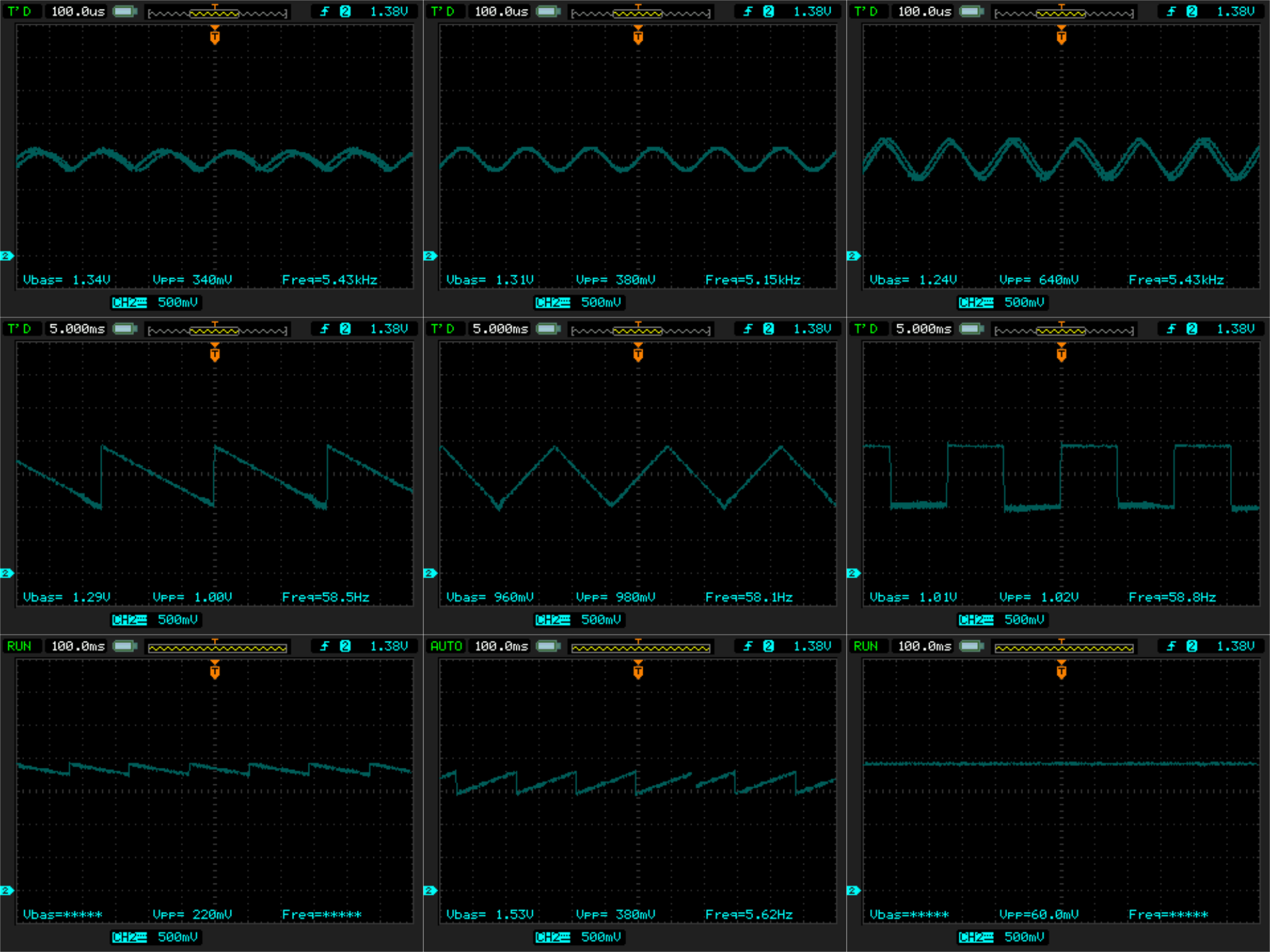
The 1-SHOT waveform is visible only with certain RATE settings, corresponding to sequencer TEMPO setting. The amplitude is lower and offset greater then for SLOW LFO setting. It is around 0,5V p-p with 1,75V offset (or 1,5V of Vbase).

Circuit design and prototyping
The idea was to make a scaling/biasing circuit, to get 0-5V output from LFO. As the waveforms levels and offsets varies, I decided to design the circuit for “average” LFO output waveform with 1V p-p level and 1,5V offset. Finally I got to this circuit (designed with help of: SLOA097 – February 2002, “Designing Gain and Offset in Thirty Seconds” by Bruce Carter, Texas Instruments”):
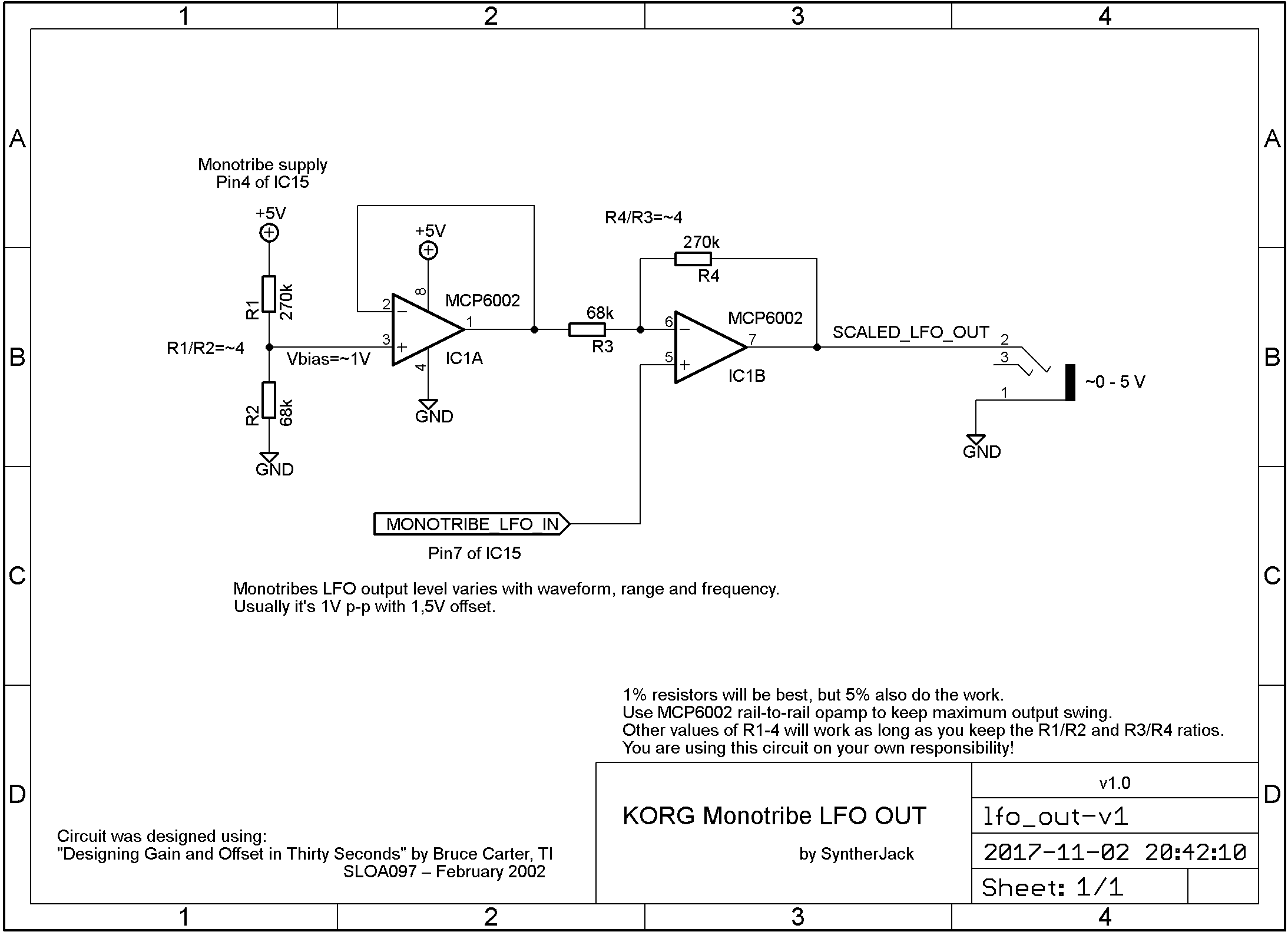
First, I prototyped it on breadboard. The circuit is using MCP6002 rail-to-rail opamp, to get full 0-5V LFO output swing from 5V supply voltage.
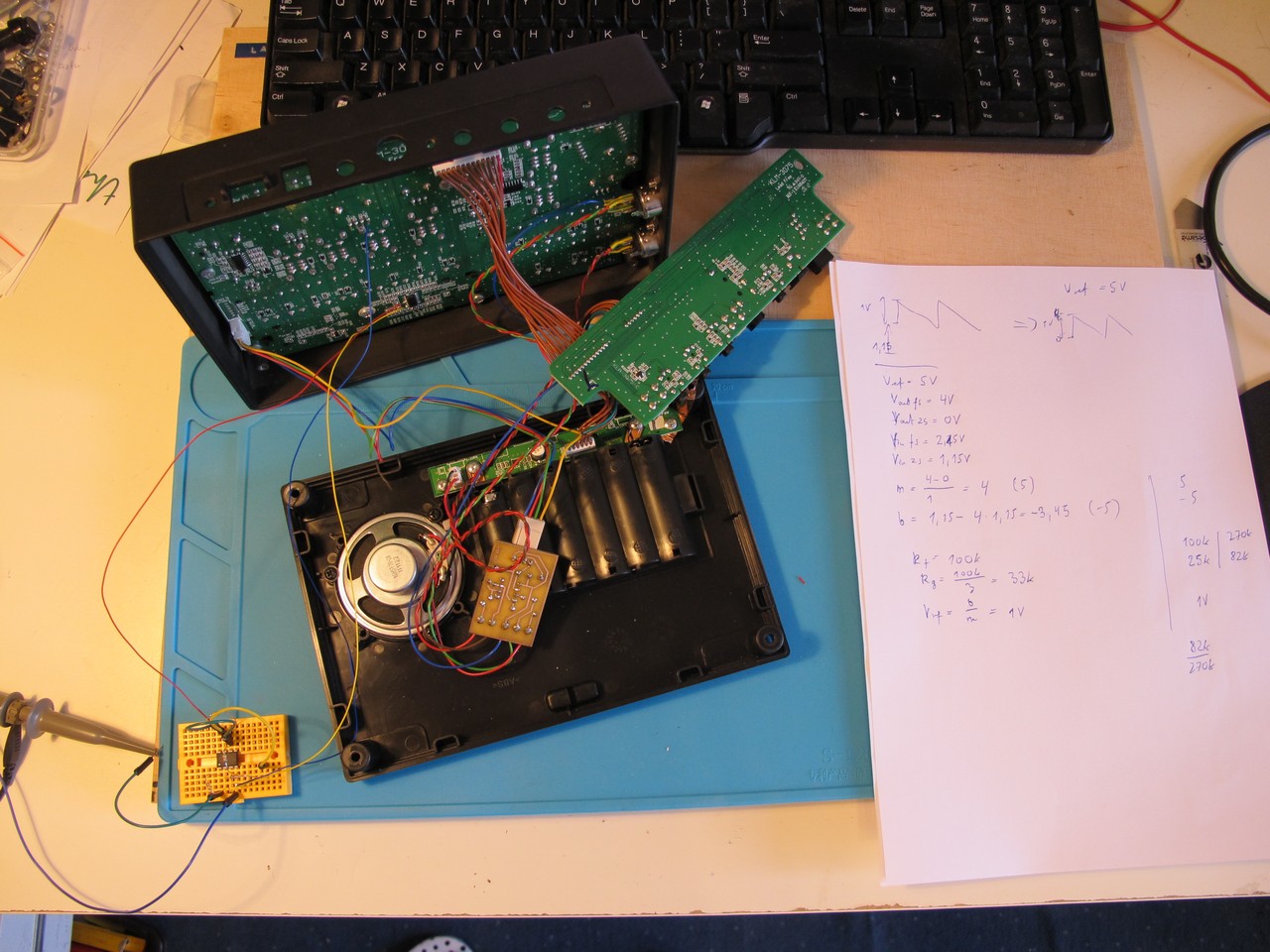
Then, I moved to protoboard. The circuit is so simple, there was no need for dedicated PCB. It’s size is 22×25 mm.

The signals on the installed LFO output looks as following. For SLOW mode, output looks almost perfect, with usable range and stable waveforms.
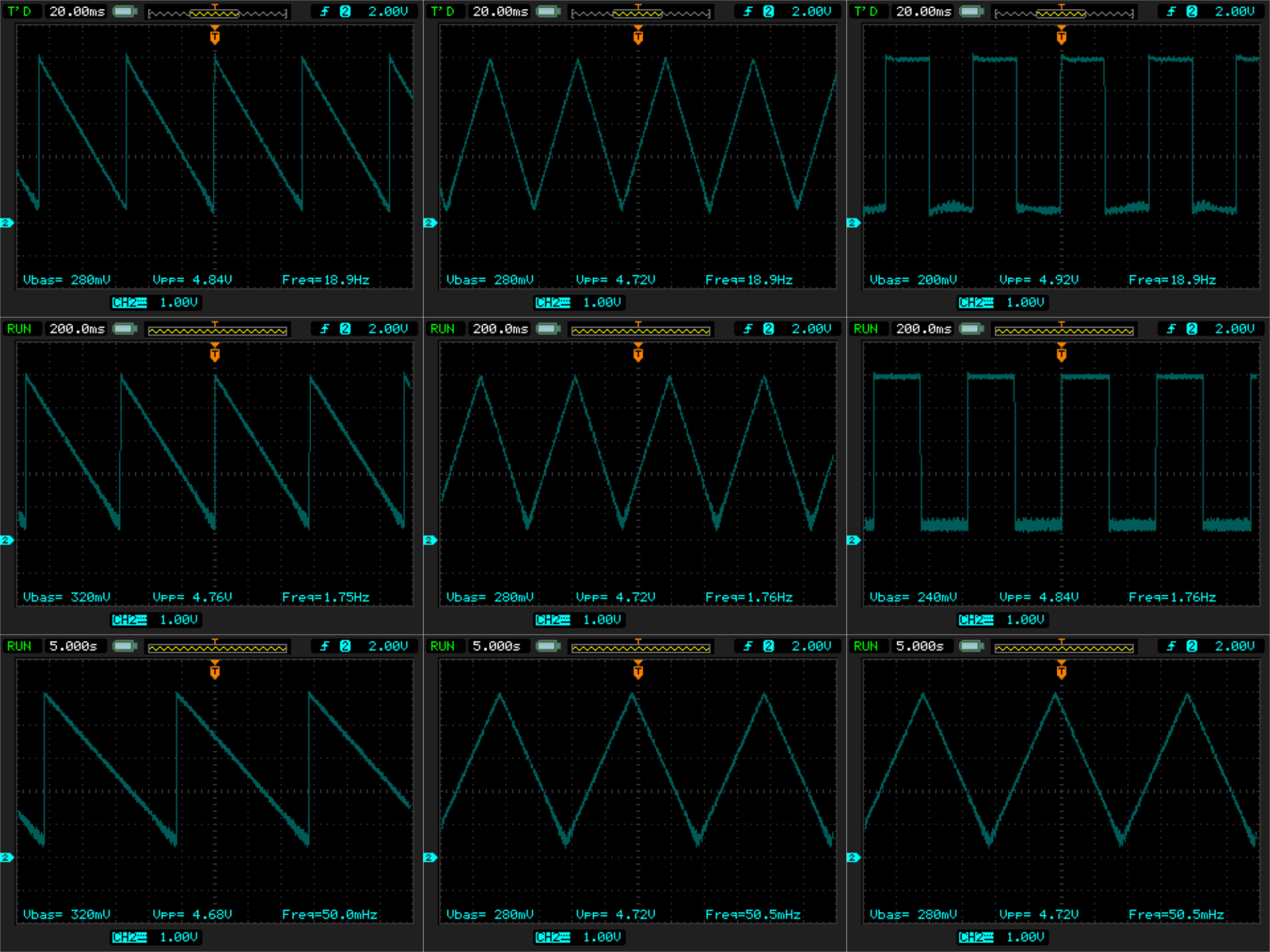
For FAST mode, the problems are as in original – distorted waveforms and often unstable for maximum RATE. At moderate settings – frequency-related glitches happen sometimes, but still signal is very useful as modulation source. For minimum RATE setting, the offset is greater due to scaling circuit compromises, the levels are also not satisfying – it is better to use LFO in SLOW mode with maximum RATE.
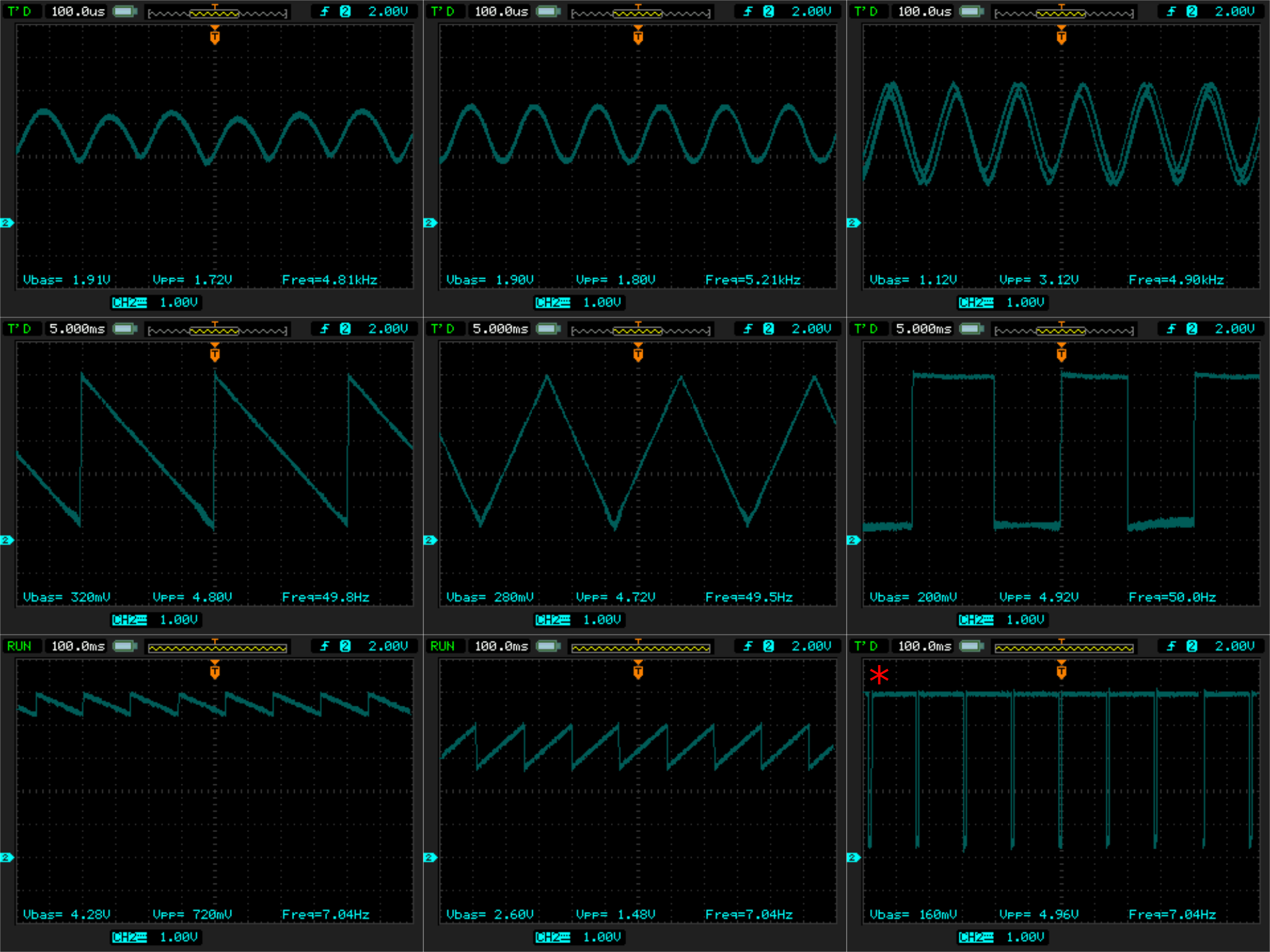
1-shot waveforms look very promising. Good-looking shapes, unfortunately over 2,5V of Vbias. Note, that waveform shape is related with sequencer TEMPO.
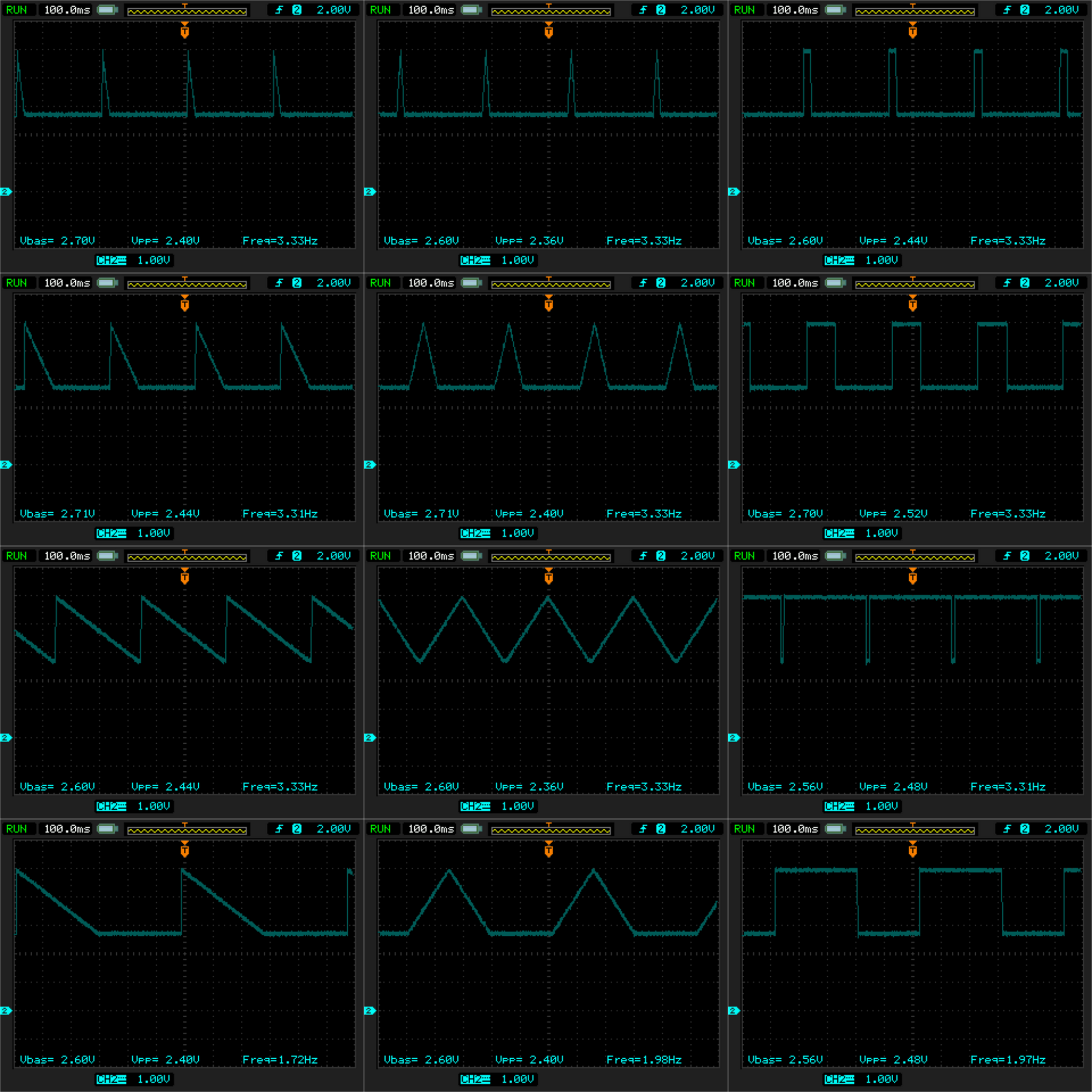
It took over 5 hours to make. I wasted 1 hour because somehow I calculated 1*5=25, which totally wasted my resistor calculations :/
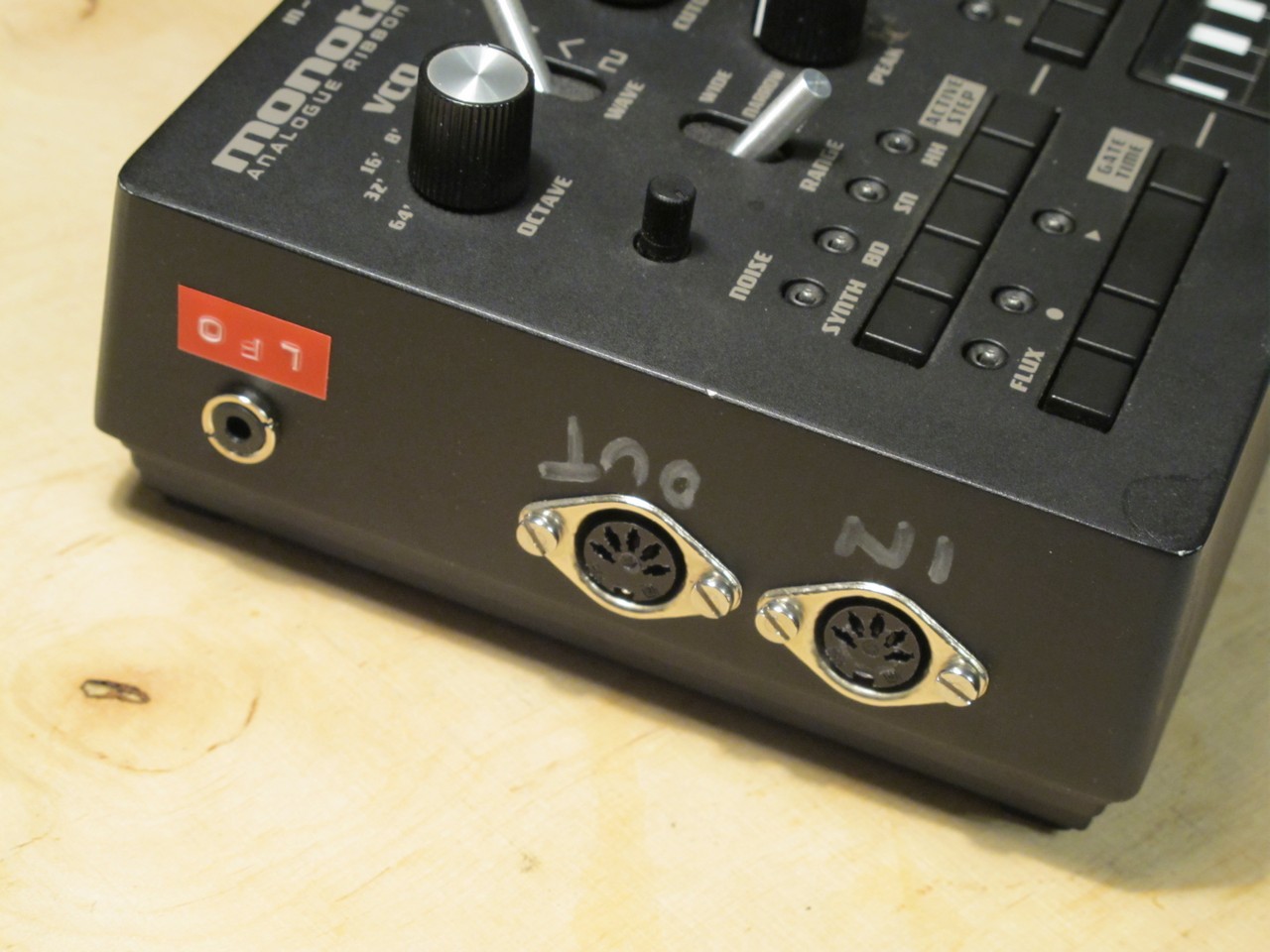
Summary
Good:
- easy to make and cheap,
- useful ~0-5V range,
- adds nice LFO to your setup.
Bad:
- works only for TARGET in VCO (VCO+VCF) mode and sequencer ON,
- does not align with sockets on the back of Monotribe :/
Generally I’m happy. The only thing that could be done better is output range. The Monotribe is powered by 6x AAA, which give more then 5V and it could be possible to power scaling circuit with it. Maybe next time.
And remember: use this schematic/info in your own responsibility.
Cheers
Jack
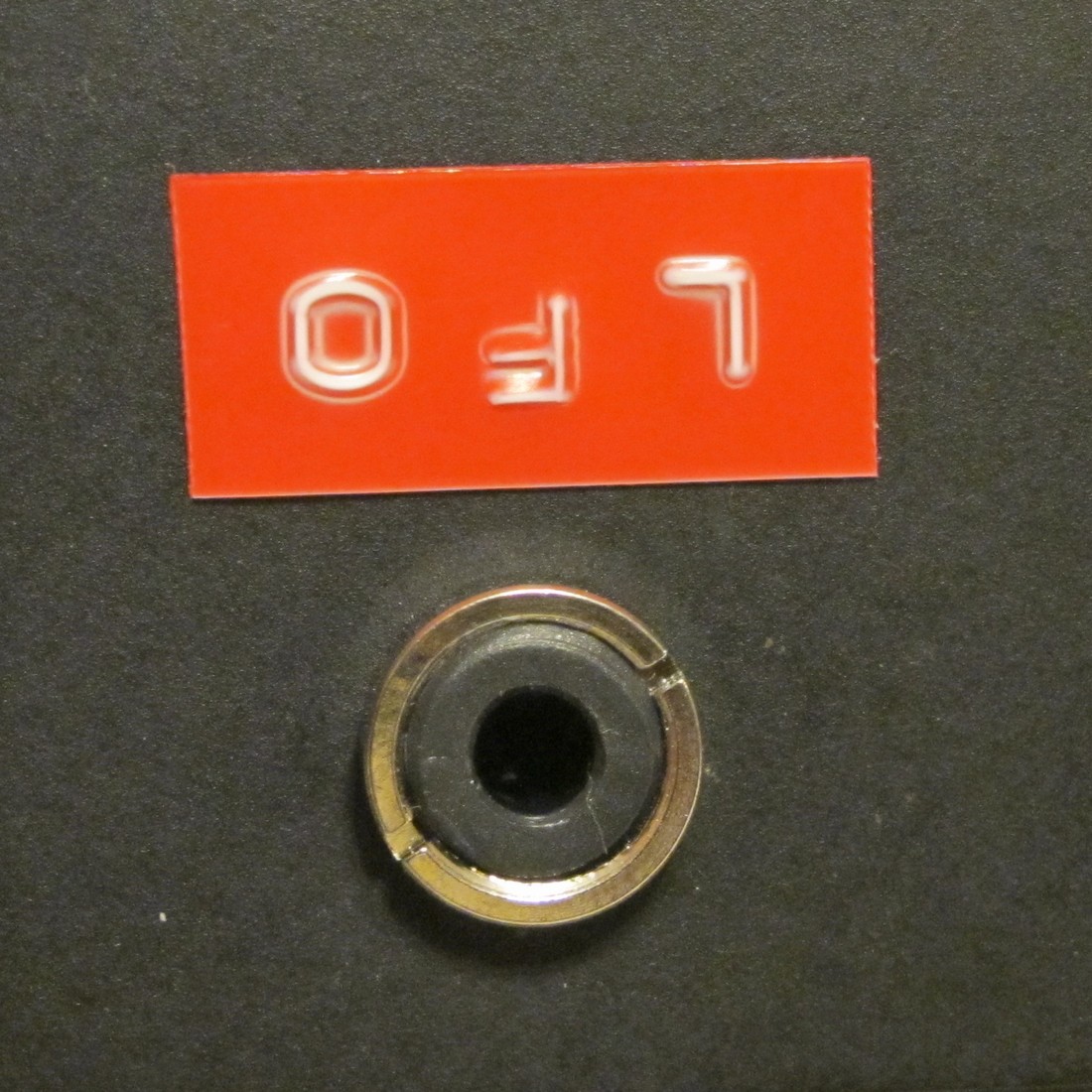
Bonjour, j’ai lu avec attention la modification du monotribe.
J’ai deux korg volca FM et sample, j’aimerai les réunir dans un seul et meme boitier et si c’est possible mettre dans ce boitier une TR08.
A votre avis est ce que c’est possible de tout reunir l’interieur des machines dans un seul coffret.?
Will this work with the Sample and Hold mode?
Does your friend have an audio/video example of how he uses this mod? I’d be very interested to see it in action. Thanks
I will try to get some video 🙂
This is great mod!
I have a little question: what is the name of this type of self-adhesive letters?
How can I do/buy similar? I will be grateful for your response 😉 Thank You.
Hi Syntherjack,
How do you tighten those round shape nuts?
Thank you
All kinds of entertaining, informational and just plain nice to read and go through your builds. Thanks for sharing!
Hello, I have a DIY tool for that: https://syntherjack.net/jack-nut-tool/